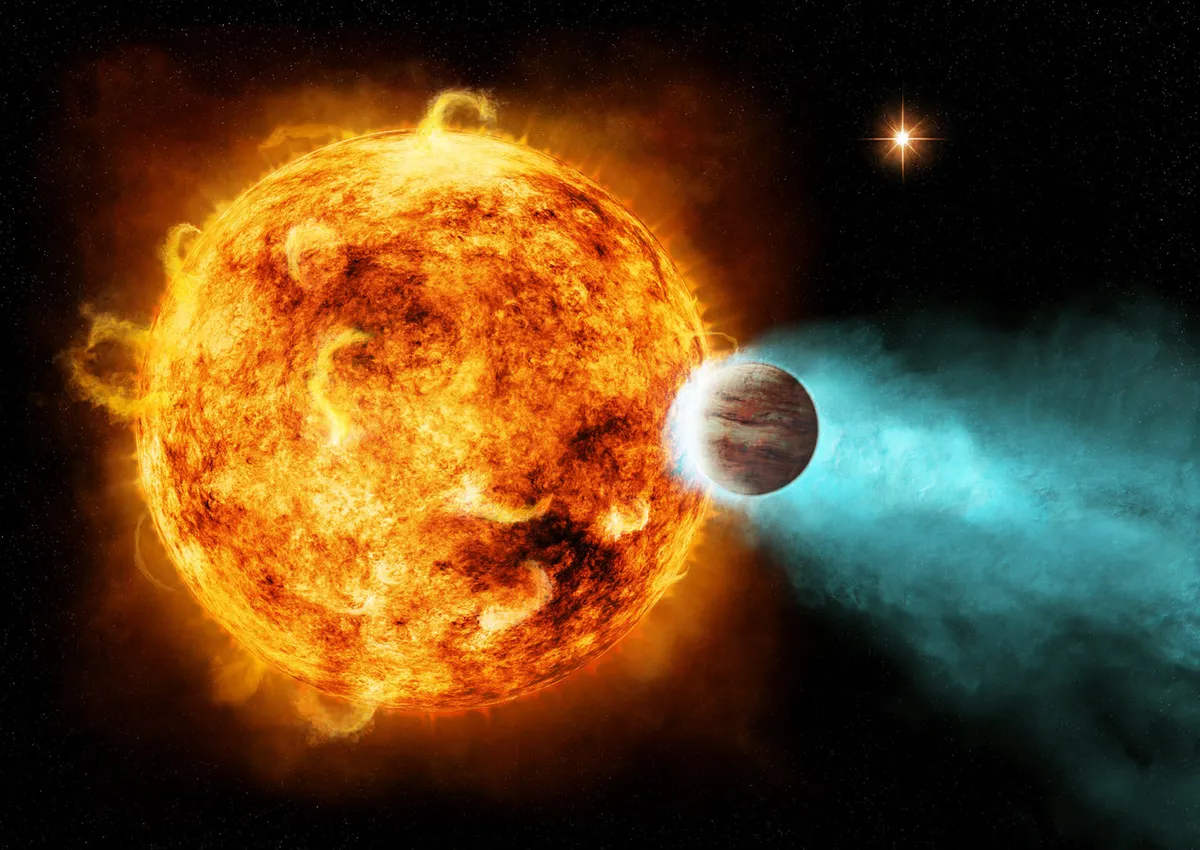When exoplanets are found, there’s a convention for naming them.
What seems like a random jumble of letters actually has a very specific and useful purpose: the name of an exoplanet tells you which star it was found around, and the order in which it was discovered.
What do the letters mean in exoplanets naming convention?

The name of the star gets a letter ‘a’ put after it and then each planet found in orbit around the star gets the next available lower-case letter in the alphabet.
So for example, 55 Cancri b is the name of the first exoplanet detected around 55 Cancri.
Although this is an easy way for astronomers to name and remember exoplanets in their research, it does have the downside of producing rather unremarkable names, especially when the star names are catalogue numbers, like HD189733 b.

A need for simpler exoplanet naming?
Exoplanets would be far easier to remember if they also had proper names, like the bright stars we’re familiar with.
As part of its 100th anniversary, the International Astronomical Union (IAU) – the organisation which officially ratifies the names of bodies in space – decided to do just that.
It launched the NameExoWorlds 2019 project, giving each country on Earth the opportunity to name a star and an exoplanet orbiting it.

As 2019 was also the United Nations International Year of Indigenous Languages, countries were encouraged to name their planetary systems using their native tongues.
In addition, the names of the exoplanet and star had to have a theme linking them, which could be continued if additional exoplanets were found around the star in future.
The stars were assigned to countries based on what was visible to them through a small telescope.
Astonomers in each country then set up their own national committees to run their campaigns. Here
in the UK, we got the star WASP-13, around which a type of exoplanet known as a hot Jupiter was discovered in 2009.

The national committee here chose to obtain proposals for names from young people across the country. All in all, 515 different naming themes were proposed.
The proposals were then shortlisted by the committee, and these 10 names were then put to a public vote to find a winner at the end of 2019.
From this Cronk Y Berry Primary School on the Isle of Man emerged victorious.
The schoolchildren chose names in Manx Gaelic: Gloas (pronounced glowas) for the star, which means ‘shine’; and Cruinlagh (pronounced crunlack) for the exoplanet, which means ‘orbit’.
Just a quick look at some of the winning names and themes from the 106 countries who took part shows their wonderful variety.

The Cook Islands named their system after pearls: Poereva for the star, which is a large black pearl, and Pipitea for the planet, after a small white and gold pearl.
Ethiopia named their system after words associated with their coffee ceremony.
They named their star Buna, after the most commonly used word for coffee, and their planet Abol, after the first of the three traditional rounds of drinking coffee.
The winning names can be found at www.nameexoworlds.iau.org, along with links to all the national websites.
I know the next time I come to study an exoplanet, I will look to see if it has been assigned a name from the NameExoWorlds project, and will include it along with the conventional name in any publications I write.
This article appeared in the April 2020 issue of BBC Sky at Night Magazine
